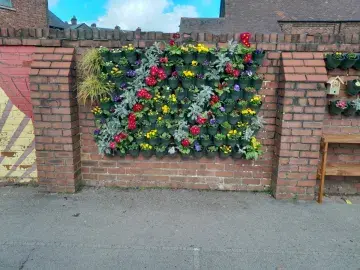
Habitats: Mapping flowers and food
Flowers brighten up our learning sites, and food growing is increasingly popular to provide opportunities to learn alongside fresh healthy produce to eat. These activities focus on plants that have been deliberately planted on your site, rather than ones that grow wild.
Mapping areas of flowers and food growing is part of the Mapping your site activities, enabling you to explore and map the habitats your site currently offers for nature. Understanding your starting point is really important and will allow you to measure any nature gains you achieve when you start making enhancements to your site. Mapping areas of flowers and food growing is one of eight habitat mapping sessions in this unit of learning.
Before you start mapping, the introductory activities have been designed to support learners in exploring concepts around cultivated plants and food growing, allowing them to answer the questions in the Flowers and Food Habitat Flowchart.
You can carry out this activity at any time of year, but spring and summer are best.
Getting to know your space
Preparation
Green skills
- identification and ecology
- recording data
- interpreting data
What you need
- Flowers and Food Worksheet - Who Eats What
- Flowers and Food Habitat Flowchart
- clipboards
- drawing materials
- a tablet, laptop, or desktop PC to access the online Habitat Mapper tool
- a printed map of your site, if you do not intend to use the Habitat Mapper outdoors
Location
Outdoors
Useful guidance
Step by step
- Give each group (3 or 4 is a good number for this activity) a Who Eats What Worksheet.
- Give the group 5 minutes to read the list of plants and encourage them to discuss and circle which are grown as food for people. Emphasise that food grown for people often serves as food for nature as well. Remind learners that there is no right answer, but they must listen carefully to each other to come to a consensus.
- Facilitate a discussion comparing answers with the provided answer sheet and encourage exploration of any differences in answers among the groups.
- After completing the activity, head outside to an area of flowers or food growing – where plants have been intentionally planted as opposed to growing wild.
- Learners can use the Flowers and Food Habitat Flowchart to decide which habitats you have.
- On the Habitat Mapper tool, or a printed map of your site, educators and learners work together to draw on these areas of habitat.
- Repeat this for each separate area of flowers and food growing on your site, until you have mapped them all.
- If you used a printed map, transfer it all to the Nature Park map using the Habitat Mapper tool back in the classroom. This is a really important step to ensure your site and your observations are part of national community science research.
- Return to the Mapping your site page and select the next habitat category you have on site.
Reflection
Ask learners to consider how they know whether these plants were intentionally planted by people or if they are wild, growing on their own. Guide the conversation toward understanding the varying needs of different plants. Ask students to think about how much help each type of plant might require from people to grow successfully. If there are plants that were not planted, encourage learners to think creatively about how these plants might have ended up in their discovery spot.
What to try next
Add other habitats to your Nature Park map

Mapping water habitats
Begin activity
Habitats: Mapping vertical features
Begin activity